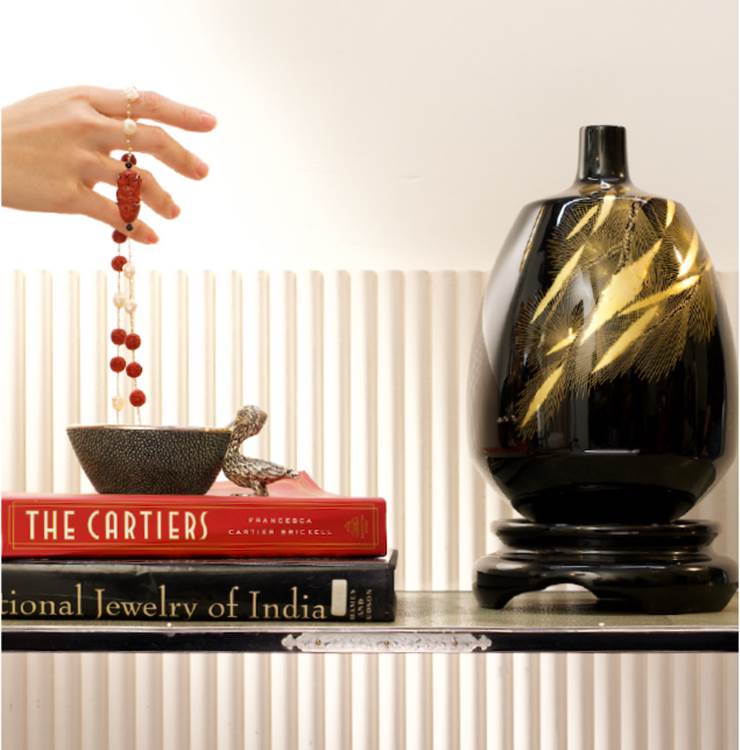



| Beautiful Japanese Lacquer Vase with Leaf Motifs from the Meiji Period (1868 – 1912), made in Circa 1880-1900. The vase was painted by a Top Japanese Lacquer Artist, Kihei Shomei. Maki-e is a distinctive Japanese lacquerware technique developed around 1200 years ago. Maki-e (literally: sprinkled picture) is Japanese lacquer sprinkled with gold or silver powder onto a thick layer of lacquer as a decoration, a complicated and highly refined and time-consuming application. This cabinet also uses a Raden technique which is a decorative technique that uses the iridescent parts of which are shaved very thinly. Ra means a spiral shell and den means to decorate. The technique was conveyed to Japan from China about 1300 years ago, and marvelous examples can be seen at the Shoso-in Treasure House in Nara. This Japanese Lacquer collection is a result of the von Buren trips to Japan and its various antique fairs, where this entire lot was collected, that ranges from 70 to over 250 years. Size: 16(W) x 16(L) x 26(H) cms. Weight: 2 kgs. |